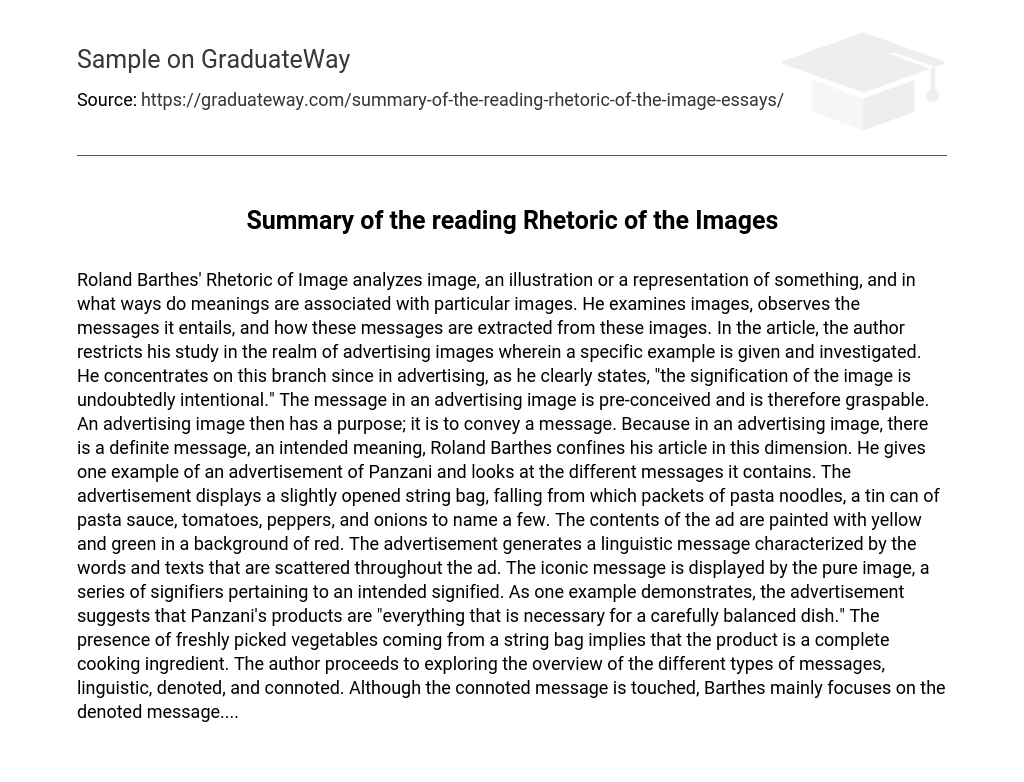Roland Barthes' Rhetoric of Image analyzes image, an illustration or a representation of something, and in what ways do meanings are associated with particular images.
He examines images, observes the messages it entails, and how these messages are extracted from these images. In the article, the author restricts his study in the realm of advertising images wherein a specific example is given and investigated. He concentrates on this branch since in advertising, as he clearly states, "the signification of the image is undoubtedly intentional." The message in an advertising image is pre-conceived and is therefore graspable. An advertising image then has a purpose; it is to convey a message. Because in an advertising image, there is a definite message, an intended meaning, Roland Barthes confines his article in this dimension.
He gives one example of an advertisement of Panzani and looks at the different messages it contains. The advertisement displays a slightly opened string bag, falling from which packets of pasta noodles, a tin can of pasta sauce, tomatoes, peppers, and onions to name a few. The contents of the ad are painted with yellow and green in a background of red. The advertisement generates a linguistic message characterized by the words and texts that are scattered throughout the ad.
The iconic message is displayed by the pure image, a series of signifiers pertaining to an intended signified. As one example demonstrates, the advertisement suggests that Panzani's products are "everything that is necessary for a carefully balanced dish." The presence of freshly picked vegetables coming from a string bag implies that the product is a complete cooking ingredient. The author proceeds to exploring the overview of the different types of messages, linguistic, denoted, and connoted. Although the connoted message is touched, Barthes mainly focuses on the denoted message….





